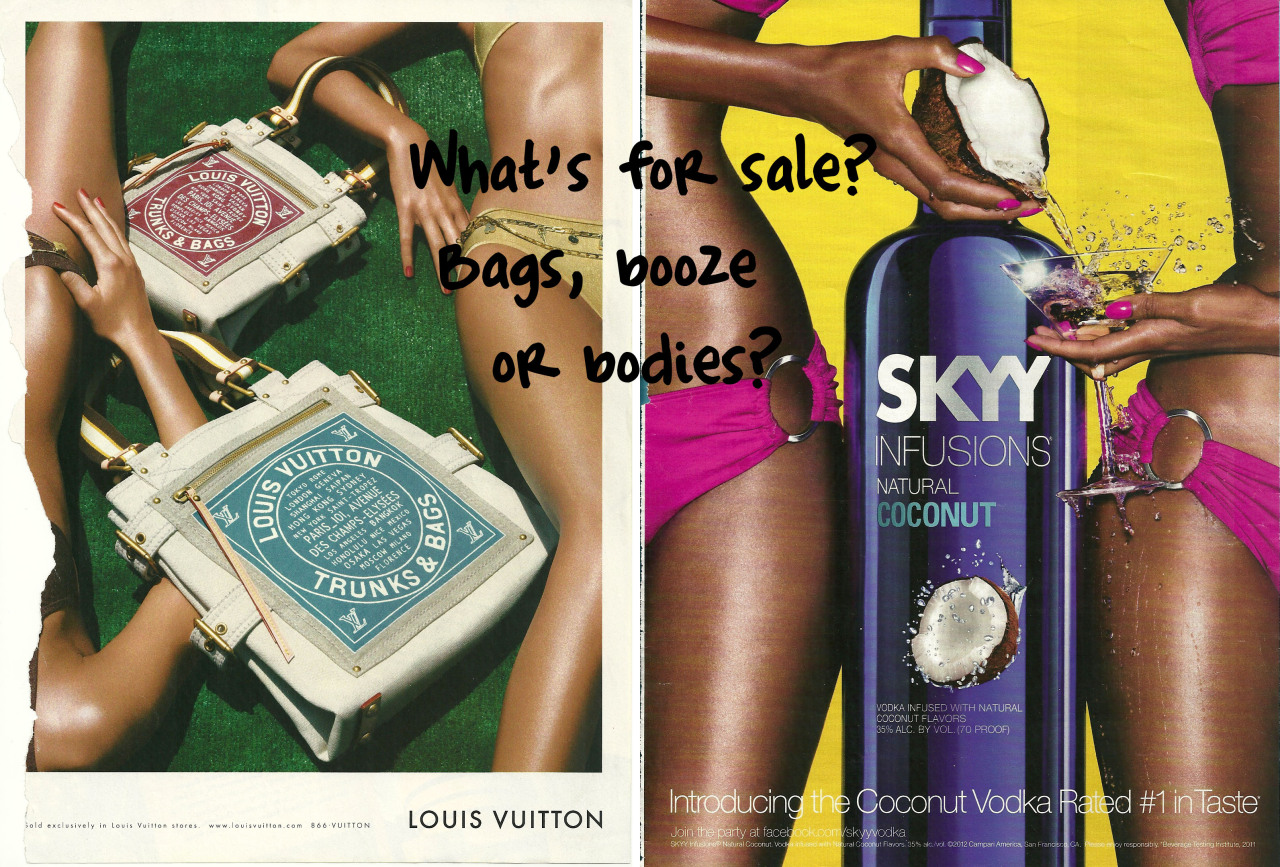Gender,
sexuality, and advertising images all have one thing in common, to sell women’s
bodies in a capitalism driven society. There’s power in sexism, racism and a
hierarchy on which to uphold too in order to be successful, in selling women’s
bodies. Men are no doubt part of the equation as well, however women dominate
it. In a country where 51% of its population is women, women should be able to
dominate the advertising of themselves. Ads are geared to majority of women,
“It’s important to consider how media representation might impact not only on
very vulnerable young women but on all women. More, it is also important to
think what such representations say about our society and its attitudes towards
women and how the media might be actively engaged in reproducing and
legitimating ideas about femininity that neither comply with the reality of
their experience and potential nor combat the ongoing inequities, abuses and
self-violations which are the familiar everyday business of women’s’ lives”
says Susan Bordo (The Media and The Body
Image, Pg. 226). The goal is to fix the problem by starting with yourself,
what you perceive and how you perceive it, what motivates you and what makes
you want to standup for yourself, what makes you want to speak up or add the
picture and be part of the creative team that provides an ad that can help
instead of continuously doing the opposite.
The idea is ultimately to sell; the change is to fix how we are selling by realizing the change we can make. It has already begun, the classic way of advertising is transforming into campaigns of videos and images defining the change that must be made. The #LikeAGirlCampaign - skip to 1:59
 |
| Are you now addicted to bags, booze or creating an incapable perfect body? |
The image on the right completely justifies this idea of the media portraying ideas girls and women “should” be thinking to emulate by purchasing these products. But what does this do for them and for us? Nothing except deteriorate the image we once had of ourselves when we were children unharmed from the world.
 |
| So This Happened... |
How about when Ford disregards women all together, how do we feel now with this image on the left. I mean, according to Provocateur:
Images of Women and Minorities in Advertising, “Women are constantly held
to this unrealistic standard of beauty. If they fail to attain it, they are led
to feel guilty and ashamed. Cultural ideology tells women that they will not be desirable
to, or loved by, men unless they are physically fit” (Cortese, Pg. 54). What messages are we sending;
these are the ads that exist and the ones that must be changed. We see this idea of beauty,
even in a cartoon and ads without faces, we are drawn to be these people. We
strive for it because we have been programmed to think this is how we should
be. But when you listen to these Three Young Women in high school who are trying to change that mindset, it
gets harder and harder to look around at the media surrounding and shaping our
lives.
Poetry slams, visual campaigns voicing #girlpower all help to start to change the mindset of what society has deemed a girl, a young lady, and woman to be. We can read articles and books and watch videos and films all day long but the change starts when we stop watching and start acting. By reaching younger women at younger ages and harnessing their little girl hearts and mindsets we can start the change that should have never occurred in the first place. Being ourselves, being whoever we think we are that’s what we have to show and say. We have to write and create the media we want to be and then making a difference where getting the rest of the world to understand comes along for the ride.
Works Cited
Bordo, Susan. "Conclusion: Body Messages and Body Meanings." Unbearable Weight: Feminism, Western Culture, and the Body. Berkeley: U of California, 1993. 204-21. Print.
Cortese,
Anthony Joseph Paul. "3/Constructed Bodies, Deconstructing Ads: Sexism in
Advertising." Provocateur: Images of Women and
Minorities in Advertising. Lanham, MD: Rowman &
Littlefield, 1999. 45-62. Print.
Kilbourne,
Jean. "16/Beauty and the Beast of Advertising." Center for Media Literacy.
Los Angeles: Center for Media and Values, 1989. 121-25. Print.
No comments:
Post a Comment